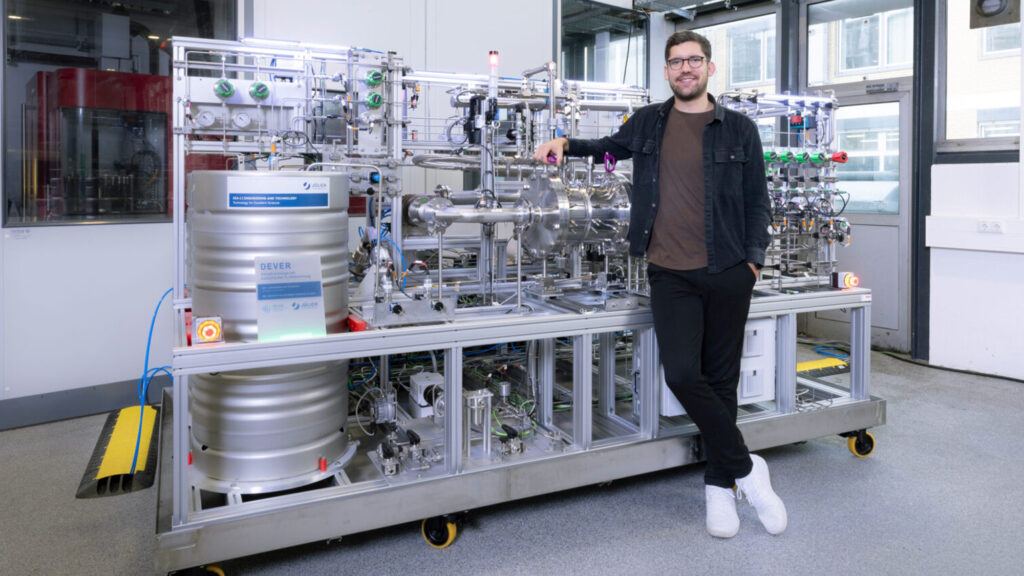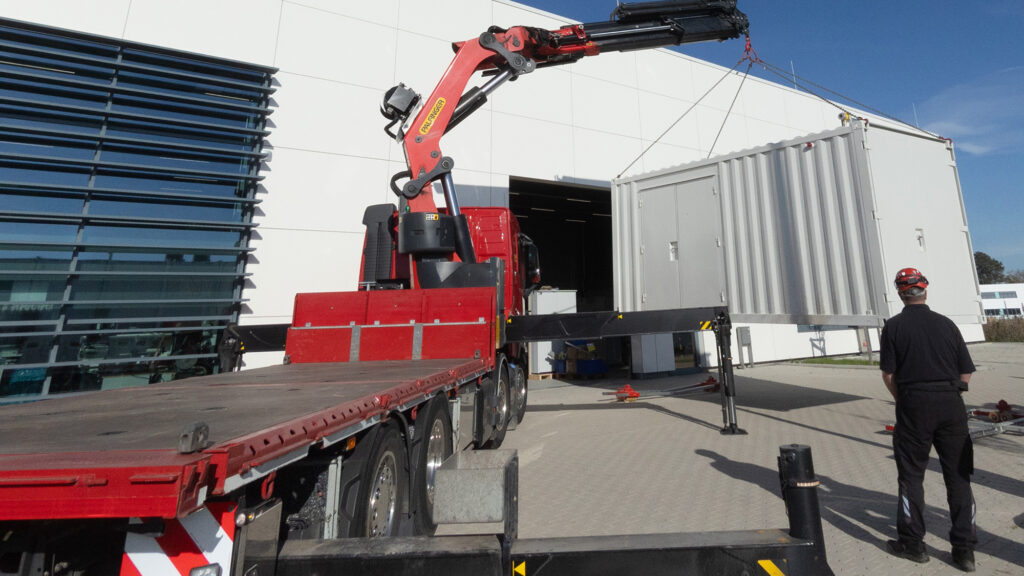In the technical hall of the Institute for Sustainable Hydrogen Economy (INW) at Forschungszentrum Jülich, some space has become available. The shipping container housing the so-called DeVer unit has been relocated to another site within Brainergy Park Jülich. Later this year, the pilot plant is expected to become one of the first INW facilities to commence operation. Its function: it acts as a kind of bottle opener for the hydrogen deposit bottle.
DeVer is a development by chemical engineer Dr. Simon Hahn. He is still working at Forschungszentrum Jülich, but his goal is to spin out a company based on his core technology: catalytic combustion. The start-up in formation, called Clean H2eat, is developing hybrid process heat systems that can flexibly use electricity and gas/hydrogen.
The name DeVer is telling: “De” stands for dehydrogenation and “Ver” for “Verbrennung”, the german team for combustion. DeVer releases hydrogen from a larger carrier molecule. The carrier molecule is, metaphorically speaking, the deposit bottle – it allows the otherwise difficult-to-handle hydrogen to be stored, transported and handled more easily. The process of opening the deposit bottle is called dehydrogenation. During this reaction, hydrogen is released from the larger molecule, a process that requires heat. The generation of this heat is, in effect, the bottle opener.

Combustion Without a Flame
Heat generation in the DeVer unit is based on a patented process being demonstrated on a larger scale for the first time. The required heat and temperature are produced by catalytic combustion. This is a special way of burning a fuel – such as gas, hydrogen, or alcohol – not through an open flame, but through a chemical reaction on a surface known as the catalyst. This form of combustion produces no emissions. Another advantage compared with a flame: the temperature during catalytic combustion can be controlled up to around 500 °C, so that no nitrogen oxides are formed.
A Self-Sustaining System
“The catalytic combustion process is therefore suitable for a wide range of industrial heat applications,” explains Simon Hahn – for example, in the food, paper, or textile industries. However, DeVer is designed for another purpose: to act as the bottle opener for the hydrogen deposit bottle. The hydrogen-loaded carrier molecule is delivered and heated using the heat produced by catalytic combustion. The fuel gas for the catalytic combustion is hydrogen, initially supplied from a pressure vessel to start up the reactor. Once the system is running, it becomes self-sustaining. “We then use the very hydrogen we have just released from the deposit bottle,” says Simon Hahn. “With the DeVer unit, we aim to demonstrate that we can release hydrogen more efficiently, safely, and in a more space-saving manner than current state-of-the-art methods allow.”
DeVer was built at the Institute for Technology and Engineering (ITE) of Forschungszentrum Jülich, based on Simon Hahn’s concept. During the test operation, he aims to demonstrate that the technology is ready for industrial application and scale-up. At another site within Brainergy Park, the unit will soon be connected to the power grid and put into operation.
The copyright for the images used on this website is held by Forschungszentrum Jülich, aligator kommunikation GmbH and stock.adobe.com.
